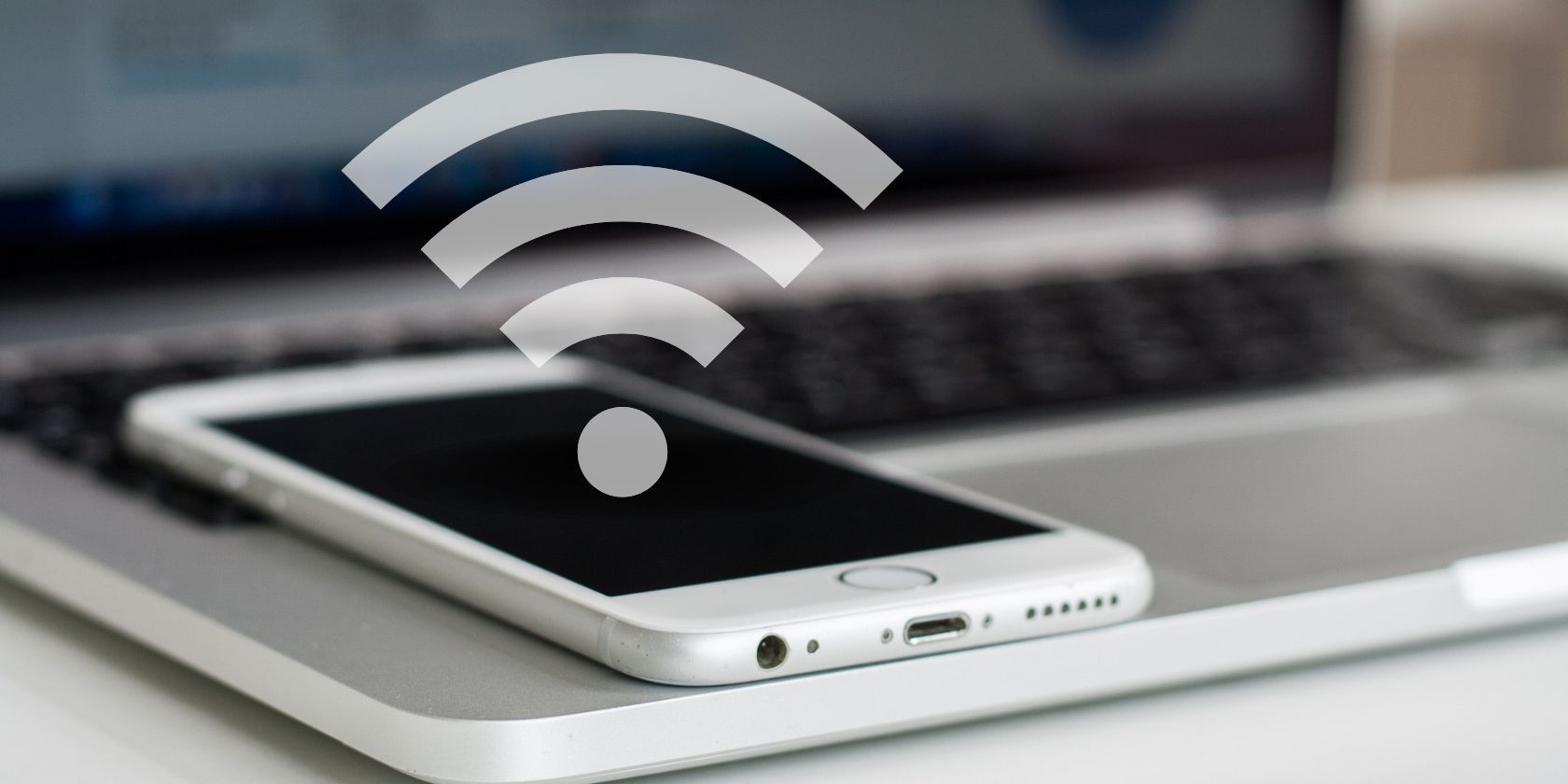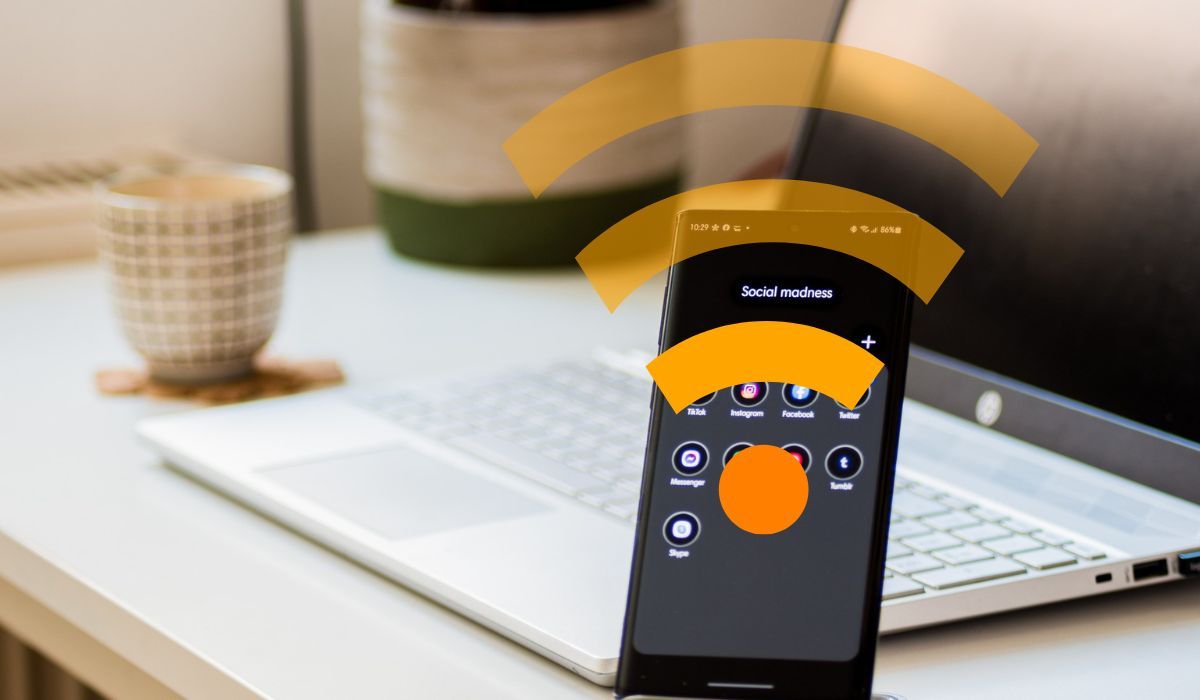As a general rule of thumb, you should avoid using public Wi-Fi, unless there is absolutely no other option. Public networks are vulnerable to cyberattacks, and often set up by threat actors with the goal of stealing sensitive information.
It is always better to create your own wireless access point. The good news is, everyone can do this easily as long as they have a smartphone and a mobile data plan. But smartphone hotspots need to be secured as well.
How to Set Up a Smartphone Hotspot
To understand how to secure a smartphone hotspot, you need to understand how they work first. In a nutshell, smartphone hotspots convert your mobile internet into a Wi-Fi signal.
Whether you have 3G, 4G, or 5G on your phone, the device can be made into a mobile access point. In case you don't know how to create a mobile hotspot on your smartphone, here's a brief explanation.
On Android, navigate to Settings, then tap Connections. Scroll down, tap Mobile Hotspot and Tethering, then swipe the Mobile Hotspot slider to the right. If you tap Mobile Hotspot, you'll see your network name, password, band, as well as a Configure button.
If you're using an iPhone, go to Settings, and tap Mobile Data. Next, navigate to Personal Hotspot or Settings, and then tap Personal Hotspot. Here, you can drag the Allow Others to Join slider to the right. Your password should be visible right below this button.
As long as you have a mobile data plan and your service provider allows setting up hotspots, this should work. Remember these instructions, because you will secure your smartphone hotspot in this same menu. The process is fairly similar on all smartphones and operating systems.
How to Secure a Smartphone Hotspot
Setting up a smartphone hotspot is easy, but securing it is a whole different matter. If you don't protect it, you'll create an opening for a threat actor to strike. This could compromise not just your phone, but possibly all other devices connected to its hotspot.
Besides, if your smartphone hotspot is not properly secured, strangers may be able to connect to it. This would slow down your connection, allow others to consume your mobile data, and potentially result in you exceeding your carrier's plan. But there are five simple steps you can take to secure your smartphone hotspot.
1. Change Your SSID
The first thing you should do when setting up a smartphone hotspot is change your Service Set Identifier (SSID)—this is your network name. You should not use the name automatically assigned by your smartphone (both iPhones and Android phones do this), but rather create your own. Make sure it's a unique name unrelated to the type of device you're using.
2. Use the Strongest Security Protocol Available
Wi-Fi Protected Access (WPA) is a universal security standard for all devices with wireless connectivity. When setting up your smartphone hotspot, you'll most likely have the option to choose between several iterations: WPA2-Personal, WPA2/WPA3-Personal, WPA3-Personal, and so on. WPA3 is the most secure choice, but if you don't have that option on your device, pick the next best one.
Under no circumstances should you select Open in the drop-down menu, because that would allow anyone to connect to your hotspot without a password.
3. Set a Complex Password
Just like SSIDs, passwords are automatically assigned to smartphone hotspots. The one your phone is using may seem strong, but if you look closely, it is most likely not. It is probably not a combination of capital and small letters, special characters, and numbers—and that is what your password should look like, if you want to make it difficult to crack. So, instead of using the default one, create an unbreakable password that you won't forget.
4. Install a VPN
A Virtual Private Network (VPN) establishes a secure connection between you and the World Wide Web, encrypting traffic from your device and hiding your information (i.e. IP address, location, personal data) from others. There are plenty of great VPN apps on both Google's Play Store and the App Store, so take your pick. In any case, using a VPN will add another layer of security and privacy to your smartphone hotspot.
5. Download Antivirus Software
Smartphones may be less vulnerable to malware than desktop devices, but they are not completely immune to it. This is why it is important to have a strong and reliable antivirus suite installed on your phone. If you already have one, make sure you update it before setting up your smartphone hotspot. And yes, even iPhones can get malware, including those that have not been jailbroken.
Bonus Tip: Set a Data Limit
This is not directly related to the security of your smartphone hotspot, but you should nonetheless do it. In the same menu you changed your hotspot settings, navigate to Advanced (your phone may say something different, but you'll find it in the same place) and set a data limit.
This is a great way to gauge how much data you have left, and control what others connected to your hotspot are doing. If the set data limit is exceeded, the hotspot will automatically be disabled and all devices will disconnect.
Bonus Tip 2: Get a Portable Hotspot
If you don't travel much and rarely need a mobile hotspot, then your smartphone will probably do. If you're often on the move, consider investing in a portable hotspot.
Also called travel routers, these are battery-powered devices that work with regular SIM cards: they connect to a cellular network, and create their own Wi-Fi access point. All you need is a good data plan, and you'll get a much stronger signal than you ever would with your phone.
Use Secure Networks
Whether you're using a mobile hotspot, connecting to somebody else's Wi-Fi, or simply browsing the web at home, you should pay close attention to network security.
There are ways to check if a network is secure, so always make sure you do that before connecting to it. This can make all the difference, because no matter how secure your device is, you are in danger as long as it is connected to an unsafe network.


